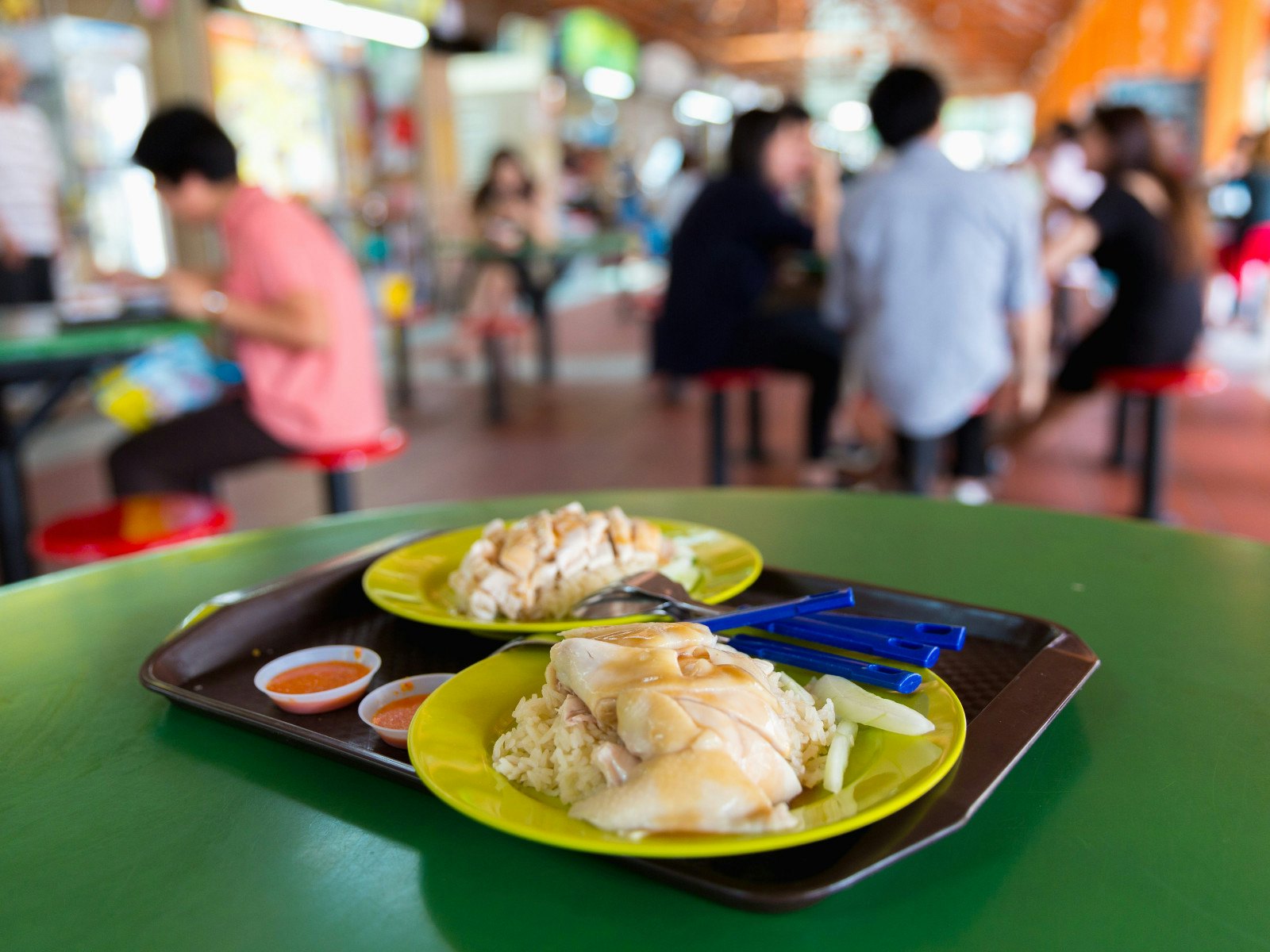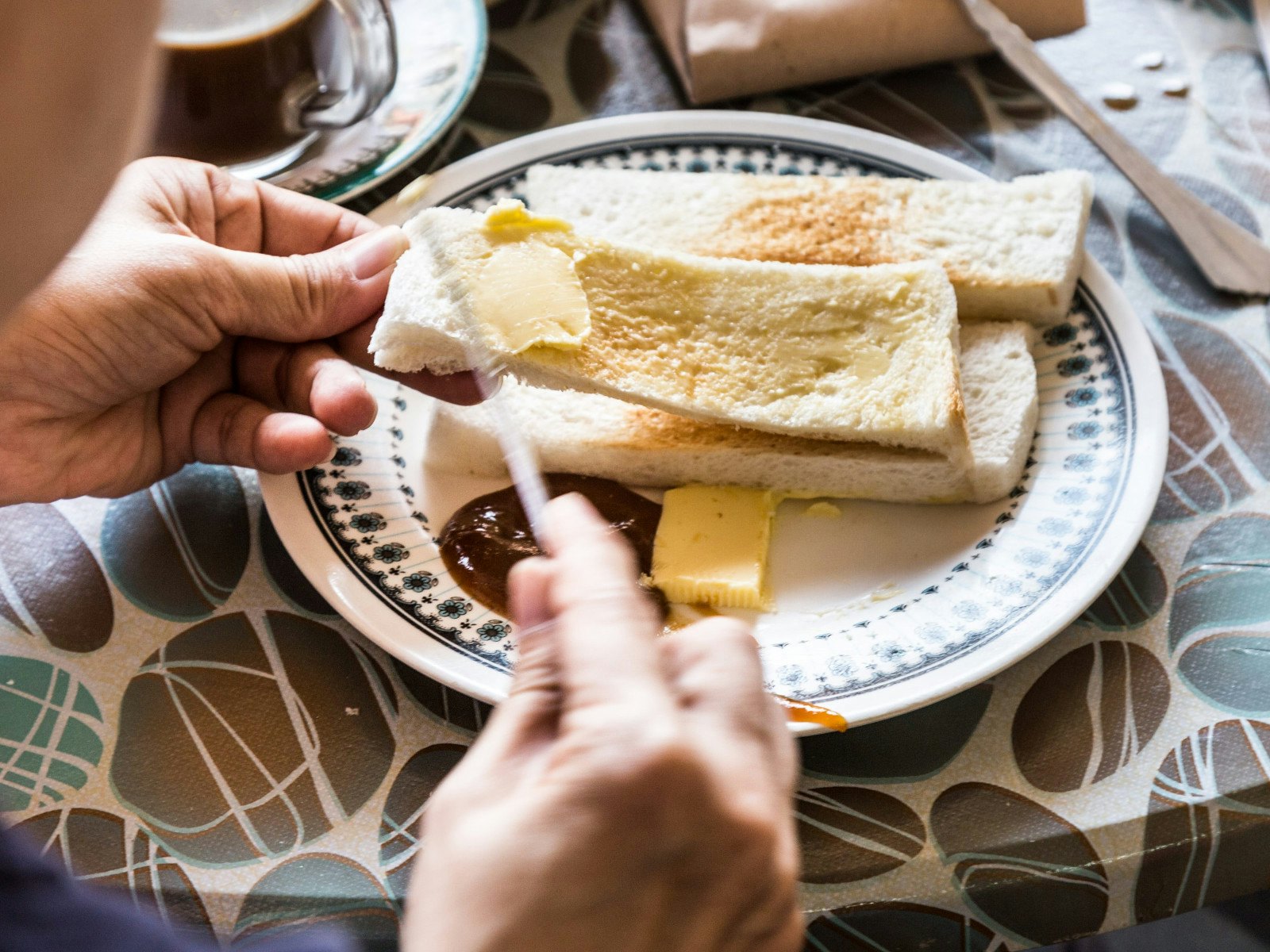

Preparing home-cooked chilly crab for dinner © SamuelBrownNG / Getty Images
With their plethora of choices and chaotic pace, Singapore’s hawker centres can seem daunting at first. But with a bit of savvy, you can navigate the city’s famous fast-food palaces like a pro. Here’s a quick guide to the dishes and the best places to have a tasty meal.

Before you head to the closest hawker stall, make sure to chope (save) yourself a seat by placing a tiny packet of tissues either on the table or on the seat itself. You’ll often find some of Singapore’s less privileged selling packets at the entrance, or you can pick some up at the closest 7Eleven store – the wet ones are the best for wiping your hands post-meal. Once choped, make note of the table number as you’ll need to quote this if the food stall of your choice delivers; if you spot a ‘self service’ sign, you’ll need to wait patiently for your food. Take cash, ideally small notes.
Once you’ve satisfied your hunger, pack your dishes and deposit them at the tray return area. If your stash of tissues hasn’t cut it, head for the toilets – most centres have large hand-washing areas where you can clean up.

What to eat
Hawker centres are the epitome of Singapore’s melting-pot culture. At all centres, you can expect to find dishes from the island’s main ethnic groups: Chinese, Malay, Indian and Indonesian, with a handful of Western, Japanese and Korean stalls (to name a few) thrown into the mix. The best stalls often have long lines but don’t let that deter you; dishes are usually whipped up pretty fast and the wait is rarely longer than 30 minutes.
Crab: Chilli crab is arguably Singapore’s most famous dish. It’s typically served in a slightly spicy, sweet-and-sour tomato-based sauce, but if you’re looking to try something more adventurous, order a white- or black-pepper crab. A 1kg crab will feed two people; don’t forget to order some mantous (steamed or deep-fried buns), which are perfect for mopping up the leftover sauce.

Chicken rice: This somewhat simple-looking dish of chicken served on a bed of fragrant rice with chilli and ginger paste was deemed worthy of a shiny Michelin star in 2016. Head to Hong Kong Soya Sauce Chicken Rice & Noodle in the Chinatown Complex to try the Michelin-starred dish for yourself, but be prepared for a substantial wait. The chicken is either served ‘white’ (poached) or ‘black’ (roasted or braised in soy sauce). Don’t be surprised if your chicken is cold; it’s been chilled in ice to ensure maximum succulence.
Kaya toast: This is the breakfast of the nation. Grilled slices of white bread are filled with a pat of salty butter and smear of sweet kaya (coconut jam), and are usually ordered as part of a ‘breakfast set’ that includes two soft-boiled eggs and a cup of traditional kopi (coffee). To eat, crack the eggs into the bowl, add a dash of soy sauce and white pepper, then mix and dip the kaya toast into it. It’s typically available from the drink stalls which also hawk soft drinks, juices and beer.

Char kway teow: The cooking of the flat, wide rice noodles in this dish takes some serious skill to perfect; if handled poorly, it has a tendency to mush into one giant sticky mess. The noodles take on a charred flavour from the wok, which is enhanced by sweet dark soy sauce. Additional ingredients typically include egg, Chinese sausage, bean sprouts, clams and spring onions.
Satay: Holy smokes, you won’t want to miss scoffing down some perfectly charred satay hot off the grill! A minimum order of 10 sticks is common and many stalls let your mix and match your meats, which include chicken, beef, mutton and prawn. Marinated for hours, the succulent meats practically melt into your mouth, and with the addition of the moreish crunchy peanut dipping sauce it’s hard to stop at just 10 sticks.

Hokkien mee: This is one of Singapore’s most loved aromatic noodle dishes. You’ll find bean sprouts, eggs, pieces of squid and juicy prawns hidden amongst your plate of wriggly yellow egg and white-rice noodles. The side of chillis and calamansi (citrus fruit) mean you can add as much spice or sourness as you like.
Nasi lemak: Infused with coconut milk and pandan leaves, the creamy rice is the standout star of this dish. Served with a plethora of sides including – but not limited to – sambal (chilli paste), bilis (fried anchovies), fried egg and sliced cucumber. Complete your meal with deep-fried fish or chicken wings, otah (grilled fish cake) or some rendang curry; it’s like your own personal buffet on a plate that tastes oh-so-good.

Sambal stingray: Slathered with sambal and barbecued in a banana leaf, the fleshy stingray wings are the perfect blend of smokey meat and crispy skin. Add some cincalok (condiment of fermented shrimps, chillis, shallots and lime juice) and a squeeze of calamansi for the full taste experience that has Singaporeans raving. Be warned: most locals like their sambal spicy!
Roti prata: These fluffy, fried South Indian flatbreads may be responsible for many a bulging waistline, but they’re so worth every calorie. Served with a dish of spicy curry sauce, they come in many different flavours, the most popular being plain – egg and cheese. Those wanting to indulge their sweet tooth should opt for the banana and chocolate flavour. Make sure to get ones hot off the grill for maximum crunch.

Rojak: Possibly the closest thing you’ll find resembling a salad in Singapore, this crunchy, sweet and spicy dish is a messy mix of vegetable, fruit and dough fritter pieces lathered in a dark prawn paste, tamarind and chilli sauce. Completed with a topping of crushed peanut pieces, this sticky hodgepodge really does taste much better than it looks.
Carrot cake: Forget the sweet carrot cake you’re probably used to, as this dish is neither a cake nor contains carrot. Instead, it’s made by stir-frying pieces of steamed ‘radish cake’ (white radish and rice flour) in a wok with garlic, eggs, preserved radish and seasonings. There are two versions, black and white; the former is sweeter as it’s cooked with the addition of sweet dark soy sauce.

Where to go
Hawker centres are found all over the island; however, here are a few of the best places to get you started on your gastronomic adventure: Chinatown Complex, Lau Pa Sat, Maxwell Food Centre, Newton Food Centre, East Coast Lagoon Food Village and Gluttons Bay.
https://shop.lonelyplanet.com/categories/singapore














